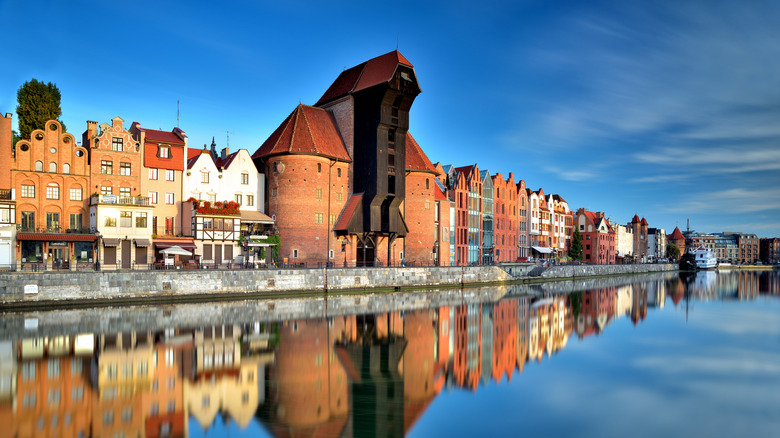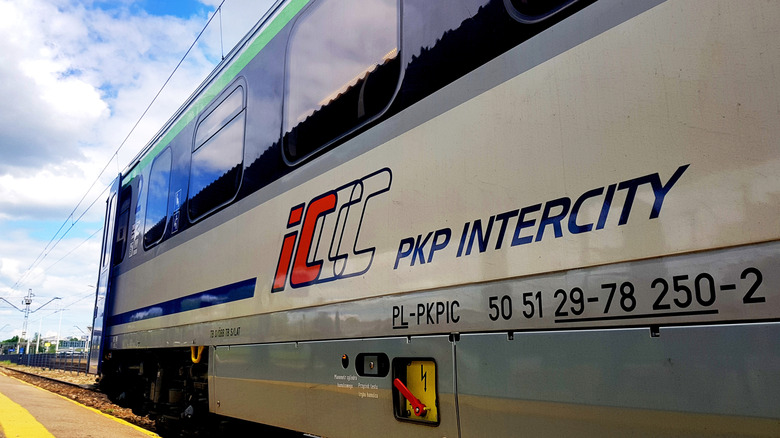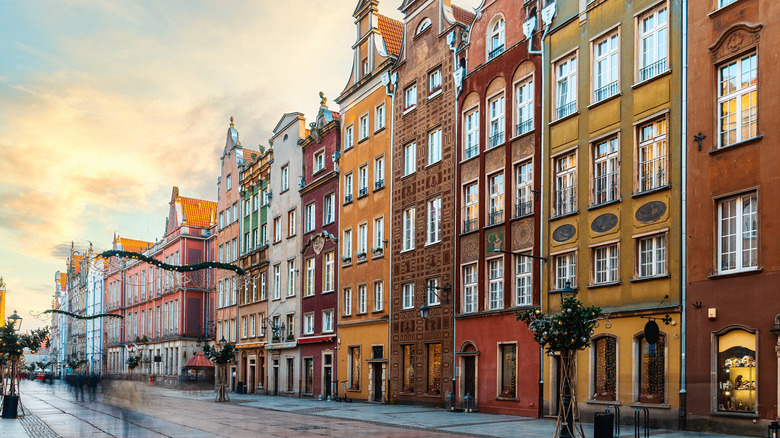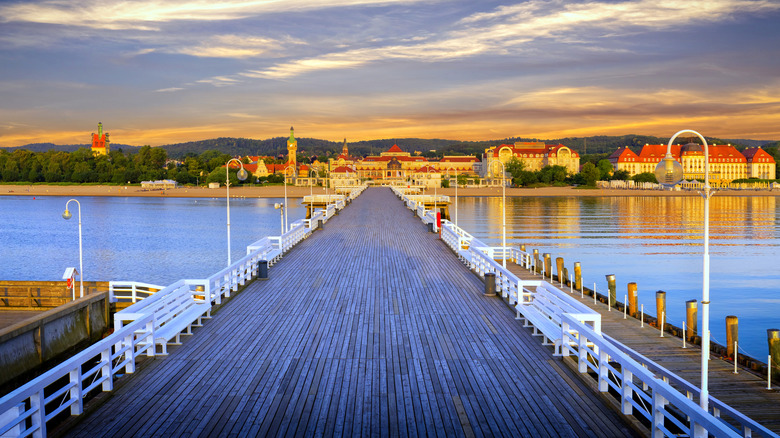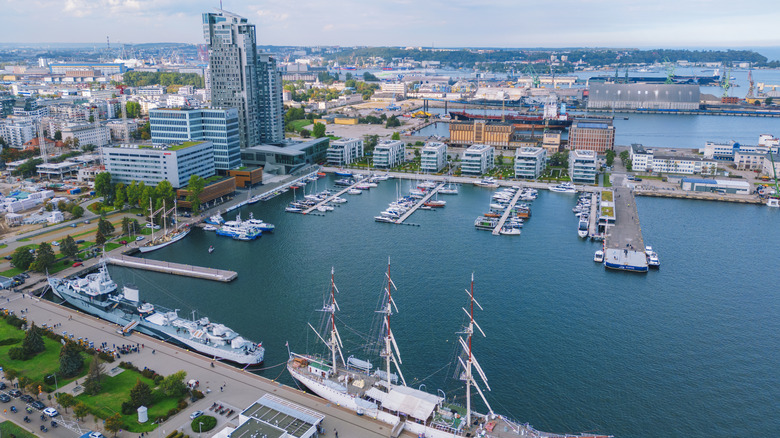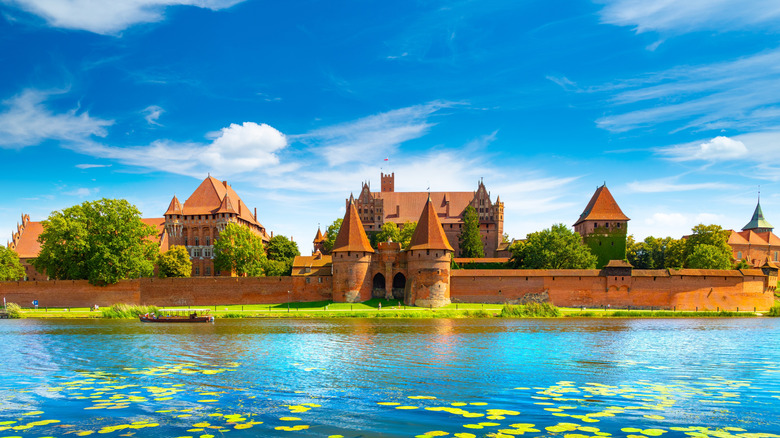One Of Poland's Urban Regions Has 3 Easy-To-Access Coastal Cities For An Affordable Trip Of Beaches And Food
Poland is known for its rich history, sprawling forests, and scientific prowess. In 2023 alone, around 19 million tourists flocked to the northern European country to marvel at the monuments of Warsaw, let loose in the nightlife of Lublin, and enjoy the affordable dupe for Rome that is Kraków. These fabulous cities and the country's less-than-tropical climes mean Poland is not typically known as a seaside destination, but its 478 miles of coastline are being severely underrated. With three beautiful, easy-to-access coastal cities in a neat line along the Baltic Sea — Gdańsk, Sopot, and Gdynia — the next trending European beach spot may turn out to be a little more northern than usual.
The three cities, part of the tri-city metropolitan area, boast all of Poland's history, beauty, diversity, nightlife, and cuisine in just a 160 square mile radius. Gdańsk is known for its deep history, which is on display in the colorful historical center, Motława riverfront, and proximity to the launching point of World War II. Sopot is a resort town through and through, with nice sandy beaches, a pier stretching far into the Baltic Sea, and a coastal promenade to rival Monte Carlo's. Finally, Gdynia is a young, bustling city known for its modernist architecture, fun nightlife, and vibrant arts scene. It is home to the annual Polish Film Festival and has a culture calendar worthy of international attention.
How to get around
Getting between the cities is remarkably easy. Many travelers will opt to use one city as a base and travel to the other two for day trips. Alternatively, it is equally easy to hop between each city, with all of them hosting comfortable accommodations for all budgets. Gdańsk, the largest of the three cities, has an international airport that services most of Europe with easy connections from the U.S. It also has convenient bus and train routes between the rest of the country and eastern Europe. Because of this, many choose to call Gdańsk home for the length of their stay.
Once you know how you want to spend your time, you can plan your travel between the three cities. The most convenient option is to travel by train on the SKM, or "Tri-city Rapid Transit Rail." Connections between the central Sopot and outlying Gdańsk and Gdynia only take 10-14 minutes and the full stretch between Gdańsk and Gdynia is just 23 minutes. Each train runs for almost 24 hours.
You can buy tickets online, inside a train station, or on the train (though this comes with an additional fee). At the time of writing, a single ticket costs 6.50 Polish złoty (around $1.73). There is a three day "zone" ticket for 50 PLN ($13.32) which could save you money if you'll be travelling very frequently between the cities. If you're staying in each of the cities (i.e. not day-tripping), however, it's probably more economical to just purchase single tickets. More often than not, European train stations don't have ticket barriers so you must avoid the common transit mistake that tourists often accidentally make in Europe and validate your ticket on the electronic scanners.
Immerse yourself in history along the canals of Gdańsk
For history buffs, the picturesque canal city of Gdańsk is a paradise. From the 10th-century old town and medieval St. Mary's Basilica (which broke ground in 1346) to the 19th-century shipyard and Westerplatte (where World War II began), you could spend your whole trip there and still have more to learn.
The old town is a colorful masterpiece of middle-age architecture, baroque fountains (Neptune's fountain), glinting amber stalls, and the beautiful Motława Riverfront. One of the best ways to see its European charm is from the AmberSky Ferris wheel, which gives you 360 degree views of the city from 160 feet up. Also on the riverfront is the famous Crane — a distinct 15th-century structure that was both a gate to the city and crane for the port. It's now part of the National Maritime Museum. Meander along the embankment to see the strange structure, try some traditional Polish fare, or shop for local amber jewelry.
From the embankment, the famous dockyard is less than a half hour walk away, and an extremely pretty one to boot. The dockyard's size and capacity make it one of Europe's most prominent, but it is also the home of Solidarity, a significant anti-Soviet resistance movement that began as a trade union fighting for fundamental rights in the dockyard and became an international symbol against authoritarianism. You can learn about this history at the European Solidarity Center or take a scenic evening cruise on a traditional Polish boat from the dockyard down the river and back into town.
Relax on the beaches and hillsides of Sopot
The middle point of the tri-city area is the resort town of Sopot. It has been a fashionable beach destination since 1901 and remains one of the coastal jewels in Poland's crown. There's plenty to get up to, with a fascinating history on display at the Sopot Museum, a thrilling aquapark, and the bizarre Crooked House (that is built as if being seen through a hall of mirrors) to gaze upon.
More than all of this however, Sopot is designed for relaxing. Whether that's chilling on the two and half mile beach, swimming in the sea, or meandering down the wooden Sopot Pier, the longest of its kind in Europe, it's the perfect place to escape the hustle and bustle of the two larger cities on your itinerary. With showers and toilets, the beachfront is full of conveniences and it's proximity to the town means you'll also never been far from helpful amenities like cafes and lockers — though you don't need to worry about your belongings as Poland has the least amount of pickpocketing in all of Europe.
You can also relax in nature at the Forest Opera — a beautiful amphitheater hidden in the Tri-city Landscape Park. If you're lucky, you could catch a performance in this transformative space. Nearby, there are also myriad walking trails through the beautiful woodland. A popular walk that doesn't require any specialist hiking skills takes you up to the summit of the Bald Mountain, which sits at 110m above-sea-level and provides stunning views of the town from above, stretching even as far as Gdańsk. In the winter it becomes a ski-slope with a dedicated sledding route too.
Find your artistic side in Gdynia
The newest city in the tri-city area is Gdynia, which was only established as a city in the 1920s. A walk along the marina or through the busy streets is the perfect way to get to know its contemporary vibe, from the glistening, bright buildings to the friendly locals. It's the perfect place to take a tour with a local and find all the coolest spots to hang-out or discover its secret history. According to travel expert Rick Steves, taking a tour with locals is the best way to really "touch" Europe's rich history for yourself.
Like the other two cities, Gdynia's coastline, beaches, and marina rival any of western Europe's more crowded spots, but what really sets this city apart is its arts and culture scene. Every year, it hosts the Polish Film Festival and the ever popular Open'er Music Festival that draw both musicians and crowds from all over the globe. The theater also puts on world-class shows every night. They're usually performed in Polish but have English subtitles that one theater-goer on Tripadvisor said they "had no trouble following."
There are also museums of every kind to sink your teeth into, from the interactive Experiment Science Center, where you become part of every exhibit, to the two preserved museum ships (the ORP Błyskawica from World War II and the 20th-century merchant ship Dar Pomorza), the Emigration Museum, and the Automotive Museum. Whatever your favorite subject is, there is a way to immerse yourself in this special city.
While you're in the area
If you have a few spare days in the tri-city area, the surrounding towns and villages can't be missed. Most spectacular is the world's largest castle by land area, Malbork Castle. This vibrant brick castle dating back to 1278 is just an hour's train ride from Gdańsk and is as beautiful as it is historically significant. It was constructed by the Teutonic Order and was once home to the Grand Master who led the knights of the order on a religious crusade across eastern Europe. You can spend hours getting lost in its elaborate gothic architecture.
For nature lovers, the Slowinski National Park is as immersive as they come. It's just over an hour's drive from Gdynia, or you can get public transport to Leba, the nearest town, and visit the park on foot. Slowinski is famous for its "moving dunes." Strong winds coming off the sea shift the masses of sand on the shore and can make you feel as if you're in a distant desert or even on another planet. With abundant wildlife and stunning vistas, it is not a place to be missed on your trip to this fascinating region.
